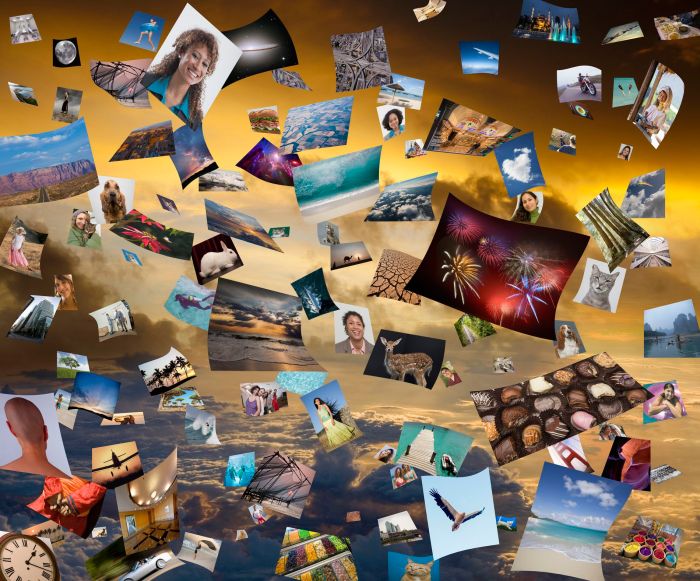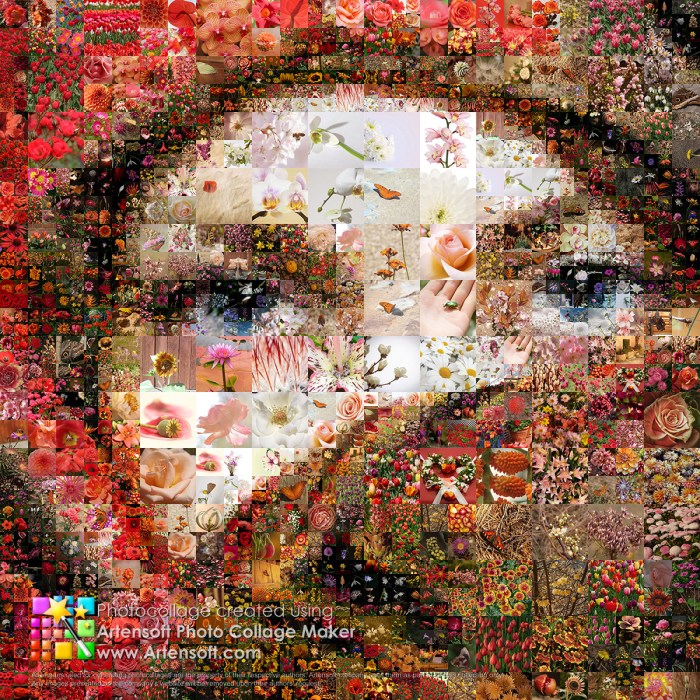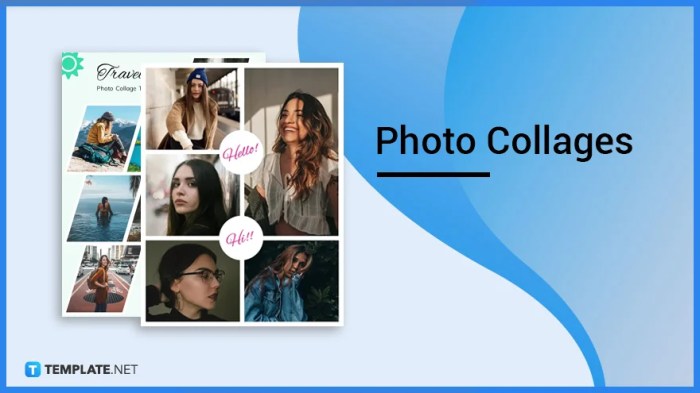Pengertian kolase, or the art of collage, is a captivating form of artistic expression that involves assembling diverse materials into a unified composition. Its origins can be traced back centuries, and it continues to inspire contemporary artists today.
Collage offers a unique blend of creativity and technical skill, allowing artists to explore a wide range of themes and ideas. By juxtaposing different elements, artists can create thought-provoking and visually striking works that challenge traditional notions of art.
Define Collage
Collage is an art form that involves combining different materials, such as paper, fabric, photographs, and other found objects, to create a new work of art. Collage artists use these materials to create a variety of effects, from abstract compositions to realistic representations.
History of Collage
The history of collage can be traced back to the early 20th century, when artists such as Pablo Picasso and Georges Braque began to experiment with combining different materials in their paintings. Collage quickly became a popular art form, and it has been used by artists ever since to create a wide range of works of art.
Types of Collage

Collage techniques vary widely, each with its own unique characteristics and artistic expression. Here are some common types of collage:
Photomontage, Pengertian kolase
Photomontage involves combining multiple photographs to create a single, cohesive image. It often uses surrealism and juxtapositions to convey a message or create a specific aesthetic. For example, the work of Hannah Höch and Man Ray.
Paper Collage
Paper collage is the traditional form of collage, where pieces of paper are cut and pasted onto a surface to create a composition. It offers a wide range of possibilities, from simple cut-outs to intricate layered designs. For example, the work of Henri Matisse and Romare Bearden.
Digital Collage
Digital collage utilizes digital tools to combine images, graphics, and text on a computer. It allows for greater flexibility and control over the composition, and enables artists to explore new possibilities and effects. For example, the work of David Hockney and Richard Hamilton.
Fabric Collage
Fabric collage uses pieces of fabric, such as scraps, ribbons, and lace, to create a textile-based collage. It often involves sewing, embroidery, and other textile techniques to add texture and dimension. For example, the work of Faith Ringgold and Bisa Butler.
Decoupage
Decoupage is a decorative technique that involves gluing cutouts from paper or fabric onto a surface, such as wood, glass, or furniture. It often uses multiple layers of images and finishes to create a unique and intricate design. For example, the work of decoupage artists like Eileen Gray and Peter Blake.
Materials Used in Collage
Collage is a versatile art form that incorporates various materials to create unique and captivating artworks. The choice of materials plays a crucial role in shaping the overall aesthetics and meaning of the piece.
Common materials used in collage include:
- Paper: Paper is the most common material used in collage, offering a wide range of textures, colors, and patterns. It can be cut, torn, or layered to create diverse effects.
- Fabric: Fabric adds a tactile element to collage, introducing textures and patterns that can evoke different emotions and associations.
- Photographs: Photographs can bring a sense of realism and personal connection to a collage, allowing artists to incorporate images from their own lives or from the world around them.
- Found objects: Found objects, such as leaves, twigs, or other natural materials, can add a unique and unexpected element to a collage, creating a connection to the physical world.
- Mixed media: Many artists experiment with mixed media, combining traditional collage materials with other art supplies such as paint, markers, or glitter, to create multi-dimensional and expressive artworks.
The choice of materials in collage is ultimately driven by the artist’s vision and the desired outcome. By carefully selecting and combining different materials, artists can create visually stunning and thought-provoking artworks that explore a wide range of themes and emotions.
Composition in Collage
Composition is the arrangement of elements in a work of art. In collage, the elements are the pieces of paper, fabric, or other materials that are glued or otherwise attached to the surface. The way these elements are arranged can create a variety of effects, from a sense of balance and harmony to a feeling of chaos and disarray.There
are a number of principles of composition that can be used to create effective collages. These principles include:
- Balance: Balance is the distribution of visual weight in a work of art. In collage, balance can be achieved by using elements of different sizes, shapes, and colors to create a sense of equilibrium.
- Contrast: Contrast is the difference between two or more elements in a work of art. In collage, contrast can be created by using elements of different colors, textures, or shapes to create a sense of visual interest.
- Emphasis: Emphasis is the focal point of a work of art. In collage, emphasis can be created by using an element that is larger, brighter, or more colorful than the other elements.
- Unity: Unity is the sense of cohesion in a work of art. In collage, unity can be created by using elements that share a common theme, color, or texture.
Line, Shape, and Color
Line, shape, and color are three of the most important elements of composition in collage. Lines can be used to create a sense of movement, direction, or rhythm. Shapes can be used to create a sense of balance, contrast, or emphasis.
Color can be used to create a sense of mood, atmosphere, or unity.By understanding the principles of composition and how to use line, shape, and color, you can create collages that are visually appealing and expressive.
Techniques for Creating Collage
Collage creation involves various techniques that allow artists to express their creativity and convey messages through the arrangement of different materials. These techniques range from simple methods to complex and experimental approaches.
Basic Collage Methods
- Tearing:Tearing paper or other materials into irregular shapes and adhering them to a surface creates a dynamic and expressive effect.
- Cutting:Using scissors or a craft knife to cut precise shapes from materials allows for greater control and detail in the collage.
- Gluing:Applying glue or other adhesives to attach materials to a surface is the most common method of creating a collage.
- Assembling:Combining different materials, such as paper, fabric, photographs, and found objects, and arranging them on a surface to create a cohesive composition.
Advanced Collage Techniques
- Decoupage:A technique involving gluing thin layers of paper or fabric onto a surface to create a decorative or textured effect.
- Photomontage:Combining multiple photographs or images to create a surreal or composite effect.
- Digital Collage:Using digital tools and software to create and manipulate collages, allowing for greater flexibility and experimentation.
- Mixed Media Collage:Incorporating a variety of materials, such as paint, ink, and other art supplies, into a collage to create a multi-dimensional and expressive artwork.
Applications of Collage
Collage has found widespread use in various fields, each utilizing its unique characteristics to convey messages, express ideas, and create visually stunning works.
In the realm of art, collage has been embraced by artists as a medium for self-expression and artistic experimentation. From the iconic works of Pablo Picasso and Georges Braque in the early 20th century to the contemporary creations of artists like Kara Walker and Wangechi Mutu, collage has played a pivotal role in shaping the history of modern and contemporary art.
Collage in Design
Collage has also become an integral part of graphic design, where it is used to create visually engaging posters, magazine covers, and other printed materials. By combining diverse elements such as images, typography, and textures, designers can create striking and memorable compositions that convey complex messages effectively.
Collage in Other Disciplines
Beyond art and design, collage has also found applications in other disciplines, including:
- Education:Collage can be a valuable tool for teaching students about composition, storytelling, and creative expression.
- Therapy:Collage has been used in therapeutic settings as a means of self-exploration and expression for individuals dealing with emotional or psychological issues.
- Marketing:Collage has become a popular technique in marketing campaigns, where it is used to create eye-catching advertisements and promotional materials that resonate with consumers.
Collage Artists

Collage has been practiced by numerous notable artists throughout history, each contributing their unique style and vision to the art form.
Some of the most influential collage artists include:
Pablo Picasso
Pablo Picasso, renowned for his groundbreaking contributions to Cubism, incorporated collage into his paintings and sculptures. His use of fragmented objects and diverse materials challenged traditional notions of representation and composition.
Georges Braque
Georges Braque, Picasso’s close collaborator, played a pivotal role in the development of collage. His experiments with different textures and materials, such as newspaper and fabric, expanded the possibilities of the medium.
Hannah Höch
Hannah Höch, a German artist associated with Dadaism, employed collage to critique societal norms and explore themes of gender, identity, and sexuality. Her works often featured photomontage and combined disparate elements to create surreal and thought-provoking images.
Kurt Schwitters
Kurt Schwitters, a German artist known for his “Merz” collages, assembled discarded materials, such as tickets, wrappers, and fabric scraps, into intricate and poetic compositions. His work challenged traditional notions of beauty and waste.
Collage, a form of art that combines different materials into a single composition, shares similarities with the practice of zikir. Just as zikir involves the repetition of certain phrases to achieve spiritual connection, collage involves the layering and combination of diverse elements to create a unified work of art.
In this way, both collage and zikir emphasize the power of repetition and the transformative potential of combining different elements. Learn more about the intricacies of zikir in Cara Berzikir Sesuai Ketentuan: Panduan Lengkap and explore the fascinating world of collage as an artistic expression.
Romare Bearden
Romare Bearden, an American artist, drew inspiration from African American culture and history in his collages. His works often depicted scenes of everyday life, capturing the essence of the black experience through a combination of paint, paper, and found objects.
Understanding collage involves combining various materials into a cohesive artwork. This technique shares similarities with the careful preparation and processing of harvested crops, as outlined in the comprehensive guide Cara Mengolah Hasil Panen: Teknik Persiapan dan Metode . Both processes require a discerning eye, a skillful hand, and an appreciation for the transformative potential of combining elements to create something new.
Collage in Contemporary Art: Pengertian Kolase
In the realm of contemporary art, collage has transcended its traditional boundaries to become an indispensable tool for artists seeking to explore new themes and ideas. This innovative technique allows artists to juxtapose disparate elements, creating unexpected connections and challenging established notions.
Collage has become a powerful medium for exploring identity, memory, and the fragmented nature of modern life. Artists like Wangechi Mutu and Kara Walker utilize collage to confront issues of race, gender, and social injustice. By combining found objects, photographs, and text, they create evocative narratives that challenge conventional perspectives.
Collage as a Form of Storytelling
Collage has also emerged as a compelling form of storytelling. Artists like David Hockney and John Baldessari employ collage to construct intricate visual narratives that weave together personal experiences, historical events, and cultural references. Through the juxtaposition of images and text, they create multi-layered works that invite viewers to engage in imaginative exploration and interpretation.
Collage in Digital Art

In the realm of digital art, collage has taken on new dimensions, offering unique possibilities and challenges. With the advent of digital tools and software, artists can seamlessly combine and manipulate images, textures, and other digital elements to create captivating and visually striking artworks.
One of the key advantages of digital collage is the ability to effortlessly layer and blend images, creating complex and intricate compositions. Artists can experiment with transparency, opacity, and blending modes to achieve subtle transitions and dynamic visual effects. Furthermore, digital tools provide access to a vast library of digital assets, including high-resolution images, textures, and patterns, expanding the artist’s creative palette.
Challenges in Digital Collage
Despite its versatility, digital collage also presents certain challenges. One challenge lies in the potential for visual clutter when combining multiple elements. Artists must carefully consider the balance and arrangement of elements to avoid overwhelming the viewer’s eye. Additionally, the precision and control offered by digital tools can sometimes lead to a lack of spontaneity and organic texture, which can be desirable in traditional collage.
Collage as a Form of Self-Expression
Collage, with its unique ability to combine disparate elements, serves as a potent medium for self-expression. It allows artists to convey their emotions, ideas, and personal narratives in a highly individualized manner.
Through the juxtaposition of images, textures, and colors, collage empowers artists to explore their inner worlds and communicate their experiences in a tangible form. The act of selecting, arranging, and layering materials becomes a reflection of the artist’s thoughts, feelings, and memories.
Emotional Expression
Collage provides a unique outlet for expressing emotions. By combining elements that resonate with their inner feelings, artists can create evocative works that convey joy, sorrow, anger, or nostalgia. The visual impact of collage allows these emotions to be communicated in a raw and unmediated way.
Narrative and Symbolism
Collage also lends itself to storytelling and the exploration of personal narratives. By assembling images and objects that hold personal significance, artists can create collages that tell their own unique stories. The use of symbolism and metaphor further enriches the narrative potential of collage, allowing artists to convey complex ideas and emotions through visual imagery.
Last Recap
In conclusion, pengertian kolase is a versatile and dynamic art form that invites endless possibilities for exploration and expression. Whether used as a tool for personal reflection, social commentary, or simply aesthetic appreciation, collage empowers artists to create meaningful and memorable works that resonate with audiences.
Helpful Answers
What is the definition of pengertian kolase?
Pengertian kolase is the Indonesian term for the art of collage, which involves assembling diverse materials into a unified composition.
What are the different types of collage techniques?
There are various collage techniques, including paper collage, photomontage, digital collage, and mixed media collage.
What materials are commonly used in collage?
Common materials used in collage include paper, fabric, photographs, magazines, and found objects.
How is composition used in collage?
Composition is crucial in collage, as it helps artists arrange elements to create a visually balanced and cohesive artwork.

